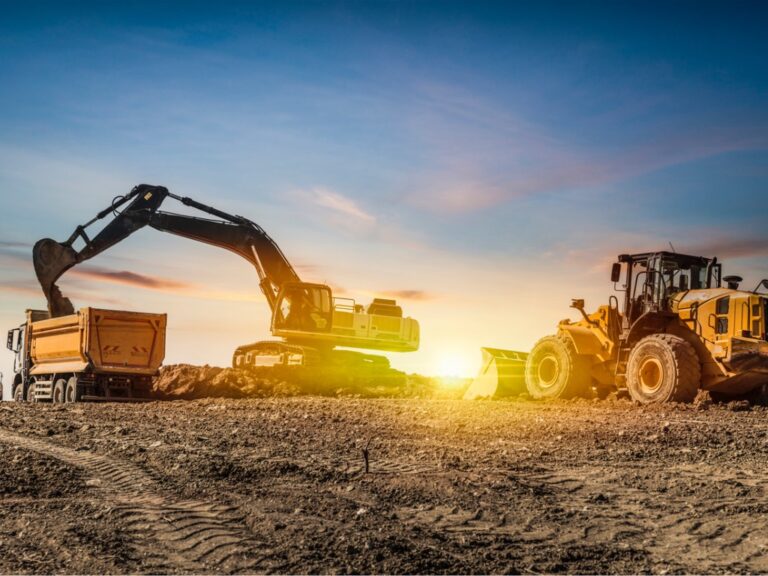How to Manage Data Collection and Management Challenges in Construction Litigation
By Kelley Halliburton
June 30, 2025

Kelley Halliburton is a partner in Barclay Damon’s Washington, D.C., office and has nearly 15 years of experience with construction litigation. She can be reached at khalliburton@barclaydamon.com.
Construction litigation cases present unique challenges for collecting and managing data. They often feature years-long timelines, multiple parties, and high financial stakes. The sheer variety of data types involved—from architectural plans and scheduling files to drone footage and handwritten notes—and the fragmented way this information may be stored throughout a project further complicates the task. Managing these challenges successfully demands both technical savvy and strategic foresight.
A Unique Digital Ecosystem
Unlike other industries where data may live in centralized systems, construction projects rely on many contributors, each with their own data practices. General contractors, subcontractors, architects, engineers, and project owners all generate and manage their own sets of documentation.
Many construction projects rely on a mix of enterprise platforms, industry-specific tools like Procore or Autodesk, and even pencil and paper. The result is a mosaic of file types—PDFs, CAD files, spreadsheets, videos, and more—scattered across various systems and devices. Documentation at jobsites is often documented through impromptu photos, messages, or notations on printed plans that may never make it into formal documentation systems.
Key Collection Obstacles
Construction cases frequently involve looking back many years. A typical commercial construction dispute might include documentation spanning five or more years from initial planning through substantial completion and subsequent remediation efforts. Parties may undergo multiple system migrations during this period, complicating access to historical data.
Identifying who holds key information is another hurdle. Construction teams evolve throughout a project, and relevant custodians could be employees of different organizations who’ve moved on or may be working on active jobsites. Effective custodian interviews must map information flows across these changes and organizations.
Field personnel frequently discuss key issues using unofficial or ephemeral communication like text messages or WhatsApp, sometimes on personal devices, without considering future discovery implications. Collection of mobile device data can be especially difficult when the employees are based in the field.
The diversity of file types may also pose technical difficulties. Standard eDiscovery platforms often struggle with construction’s specialized file formats, such as:
- CAD and Revit files containing critical design evolution
- Primavera P6 native schedule files documenting the project schedule and critical path
Modern construction sites generate unprecedented volumes of visual data that create both opportunity and challenge: drone footage, time-lapse videos, or thousands of geotagged photos linked to project plans. The files can lose crucial spatial context or key metadata, diminishing evidentiary value once exported from the original platforms (such as DroneDeploy or Multivista).
Structured data in financial or estimating systems may be crucial for claims involving cost overruns or billing disputes. These systems are often customized or proprietary, making data extraction and interpretation more difficult.
Managing Collection Hurdles
Given these hurdles, a proactive and strategic approach to data collection is key. Early data mapping—identifying what data exists, where it resides, and who controls it—is critical. Stakeholder collaboration at the outset can help prioritize the most valuable sources and streamline efforts.
Preservation letters and discovery requests must specifically address these disparate data sources with tailored language. Discuss potential sources of data with the project team before sending a preservation letter and include any known sources in such a letter, as well as potential data sources commonly used in the industry.
Remote collection tools can be essential to gathering data from custodians or devices located in the field. These tools are especially valuable for mobile devices, enabling collection of critical text messages, photos, and app-based communications from field personnel’s devices without disrupting ongoing operations. If remote collection is not feasible, a forensic specialist who can travel to the job site may be needed.
Collection protocols for mobile devices must balance thoroughness with minimizing ongoing operations disruptions and employee privacy concerns. One way to address this balance is to collect a full copy of the mobile device data for preservation, seal it in an evidence bag given to the employee and then filter specific application data using contact information and date ranges. The sealed copy can be accessed if additional data is needed later.
Construction cases often demand flexibility and looking beyond traditional document review platforms to manage technical issues and maintain context. For example, maintaining access to native systems under agreed protocols often proves more efficient and effective than traditional collection methods. This can reduce costs and preserve context, especially for files not easily managed in standard e-discovery platforms. This can be especially valuable in maintaining the spatial context of visual evidence. Establishing shared protocols for collection and production can also reduce inefficiencies and disagreements later in the process, especially for structured data or specialized file formats.
A Look Ahead
Construction firms can prepare for potential litigation by incorporating data management into their project planning from the start. Developing documentation policies aligning with eDiscovery best practices—like standardized naming conventions, centralized data repositories, and clear communication protocols—can pay dividends.
Success in construction litigation increasingly depends on bridging the gap between legal requirements and construction’s technical realities. Effective litigation teams combine legal expertise with technical understanding of the systems and formats unique to construction projects.
As the construction industry continues to digitize, companies that recognize that today’s project documentation may become tomorrow’s evidence and invest in smarter data practices will be better equipped to face litigation.
Must read intelligence for general counsel
Subscribe to the Daily Updates newsletter to be at the forefront of best practices and the latest legal news.
Daily Updates
Sign up for our free daily newsletter for the latest news and business legal developments.




